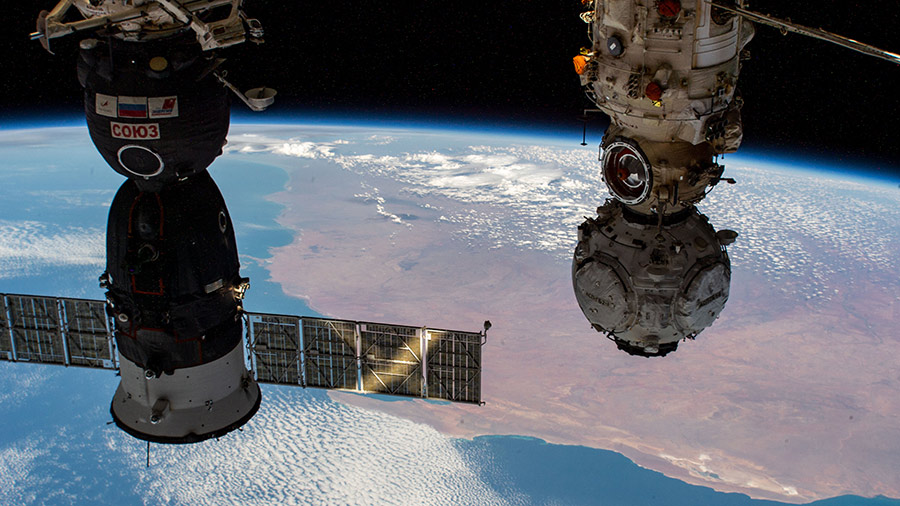Dragon, Spacewalk Preps Amidst Space Botany and Biology Research

The International Space Station is gearing up for the departure of a U.S. resupply ship and a Russian spacewalk next week. Meanwhile, the Expedition 66 crew is maintaining its pace of research exploring how microgravity affects variety of biological phenomena.
The SpaceX Cargo Dragon vehicle has been docked to the Harmony module’s space-facing docking port since Dec. 22 when it delivered over 6,500 pounds of new science experiments, crew supplies, and station hardware. It is now being readied for departure on Jan. 21 its return to Earth a day later loaded with completed space research and old lab gear for analysis and inspection.
NASA Flight Engineers Kayla Barron and Raja Chari took turns Tuesday morning organizing and packing gear inside the Cargo Dragon. Chari then spent the afternoon swapping out science freezer components inside Dragon that will soon house research samples for examination by scientists on Earth.
Barron later collected root and shoot samples from Arabidopsis plants grown on petri plates readying them for stowage and analysis back on the ground. NASA astronaut Mark Vande Hei worked on another space botany investigation as he photographed and harvested cotton cultures grown on the station to understand how weightlessness affects plant genetics.
NASA Flight Engineer Thomas Marshburn spent Tuesday on several human research and space biology tasks. He wrapped up blood pressure measurements for the Vascular Aging study, set up the Life Science Glovebox for an upcoming experiment, then took a robotics test for a behavioral investigation. Astronaut Matthias Maurer from ESA (European Space Agency) also worked on life science as he collected microbe samples for analysis, swapped particle samples inside the Mochii electron-scanning microscope, then took a cognition test.
Two cosmonauts, station Commander Anton Shkaplerov and Flight Engineer Pyotr Dubrov, continue getting ready for a spacewalk on Jan.19. Today, they configured a pair of Russian Orlan spacesuits that will be worn in the vacuum of space when they configure the station’s two newest modules, Nauka and Prichal.
Learn more about station activities by following the space station blog, @space_station and @ISS_Research on Twitter, as well as the ISS Facebook and ISS Instagram accounts.
Get weekly video highlights at: http://jscfeatures.jsc.nasa.gov/videoupdate/
Get the latest from NASA delivered every week. Subscribe here: www.nasa.gov/subscribe
Mark Garcia
Powered by WPeMatico







